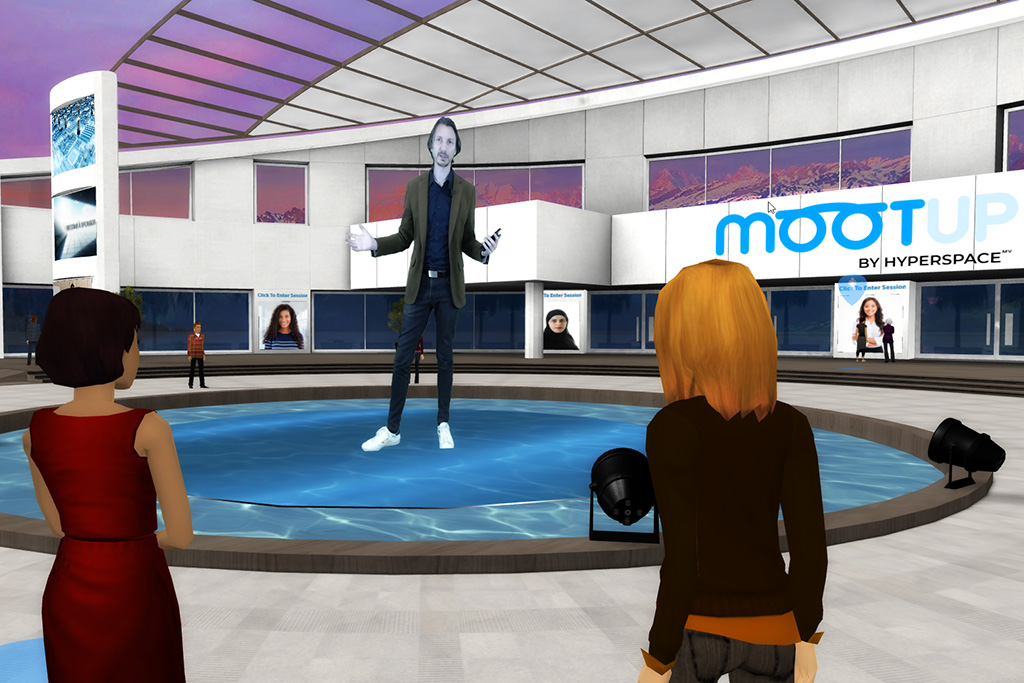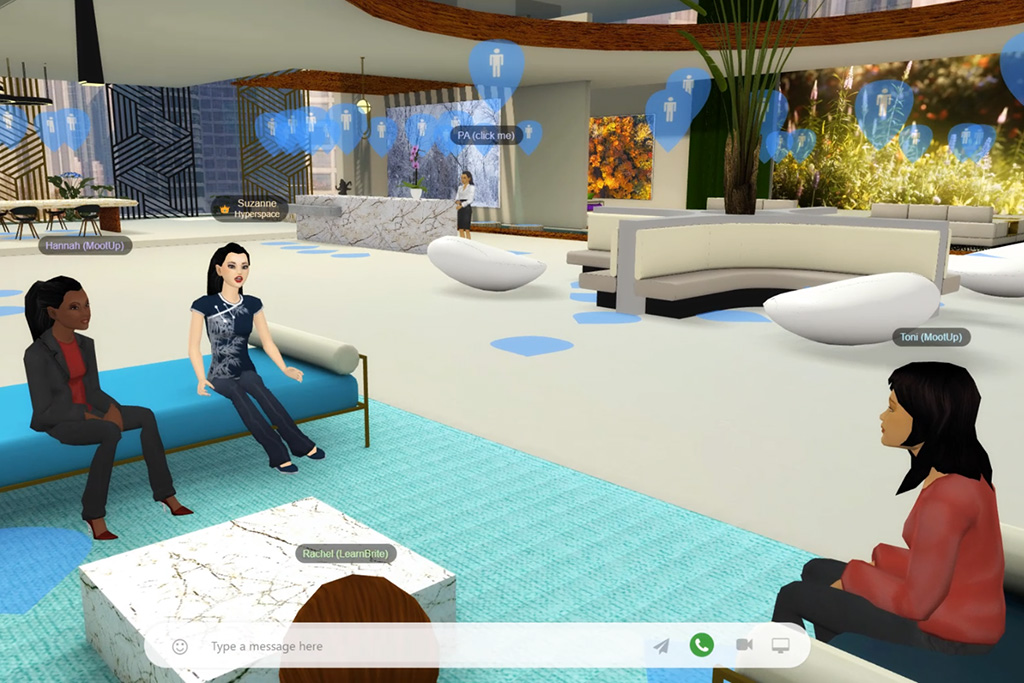Hosting in Hyperspace
Interview with Danny Stefanic
Photo Courtesy of MootUp
As the so-called metaverse expands, this lifelike, computer-generated reality has become the new frontier for connecting professionals with their networks.
Enter Hyperspace, a 3D-immersive digital hosting platform that’s surprisingly intuitive. Danny Stefanic, the company’s CEO, invited me into his virtual venue to converse via full-body 3D avatars, or digital likenesses of ourselves. There, we discussed his vision for Hyperspace, how professional hosting has changed, and why the metaverse is the next great media type.

How do business owners primarily use Hyperspace?
Hyperspace was initially established as a virtual platform for educational and training events, but we soon began hosting business meetings as well. This led to some companies adopting the platform as a year-round, virtual headquarters. They create private, 3D virtual worlds, or metaverses, that allow their staff to seamlessly perform a wide range of tasks: sales kickoffs, meetings, customer journeys, customer support, and more. Clients can reach out to us and describe their intended use for the platform. Once we have an idea of their goals, our team will onboard them, offering as much help as they need to feel comfortable creating their metaverses.
How does your platform work for new attendees?
After a host creates their metaverse, they receive a link they can share with their invite list. Attendees click that link, create an avatar, and then arrive in a 3D space. They also get an introduction from an AI chatbot with its own avatar, which walks them through how to navigate the environment, answers any initial questions, and helps them get comfortable with the technology.
From there, attendees may navigate the 3D venue on their own and take in the sights. They can approach other avatars, shake hands, share messages, and even interact with their surroundings. For example, there are lounge areas where avatars can sit and talk. It’s a very easy platform to use, even for people who have no metaverse experience.

What makes Hyperspace so simple?
Our secret sauce is the ability to run on any device, including smartphones, tablets, computers, and virtual reality/augmented reality headsets. And you can access the platform without installing or downloading any applications. It’s essentially a very immersive 3D web page. Another helpful aspect is the presence of virtual guides throughout the space. You can click on any of the AI chatbots to ask questions or get support.
How beneficial is your platform for companies that face difficulties meeting in person?
We’ve seen so much growth in terms of postpandemic remote work. Companies have sensed that employees are not bonding or feeling a sense of belonging. I call it “un-remote” working: encouraging your people to feel less remote or isolated. As companies realize the value of corporate culture and being part of teams, they utilize platforms like ours to achieve these goals.

What’s one event you’re particularly proud of?
Shell hosted an event where over 10,000 attendees joined in from across the globe. It was amazing to see and experience, and the event was a real success. I can’t think of another way you could provide that level of accessibility to so many people. It would be hideously expensive, not to mention inconvenient, for Shell to get every employee into one live space. We actually helped them build a virtual twin of one of their facilities to replicate a real-world gathering.
So clients can customize their events?
Planned events are infinitely customizable—more so than a live event. Our platform is a suite that clients can use to design anything. But to avoid the rigors of starting with a blank canvas, it comes packed with existing content: a catalog of worlds like gardens, auditoriums, and wellness retreats. We also have a studio that can capture real-world environments so clients can invite guests into a familiar space.
Additionally, we offer a 3D search engine full of trade show booths, furniture, decorations, and more. But Hyperspace is built on open standards, which means that you can bring content from elsewhere into our web page, whether it’s PNGs, PDFs, links to your website, logos, contact forms, or music via MP3 files. It’s been incredibly exciting to open up the possibilities on the platform and witness what clients do with these opportunities.

How do you think the metaverse will impact the business world?
While Hyperspace is a valuable component of the industry, it’s only an adjunct to live hosting, not a replacement. But on the spectrum of bonding with others, our platform is akin to what you experience in real life—in fact, it’s just short of reality.
I’m extremely excited about virtual reality and 3D as a media type. Before the internet, we already had images, audio, video, and words. These were our main media types. Then the internet came along, and we digitized this media, moved it into another realm.
But there’s another media type that is really quite young: 3D. It’s being used in gaming, architecture, and all sorts of industries, and it’s only becoming more pervasive. With our platform, we can now offer 3D capabilities in any web browser and provide a metaverse experience on any device.
We really are on the foothills of the next major media type, a new way to communicate and share experiences. This is a pivotal point in history, in which we’re making a new technology readily available—the sort of thing that future generations will take for granted. It doesn’t matter where you are in this industry. Anyone who partakes in 3D technology or one of our platforms is a part of human history, the blossoming of a new communication medium.
For more info, visit hyperspace.mv
TAKE ACTION:
Consider innovative solutions to your clients’ needs. How can new technology uncover opportunities or results?


















